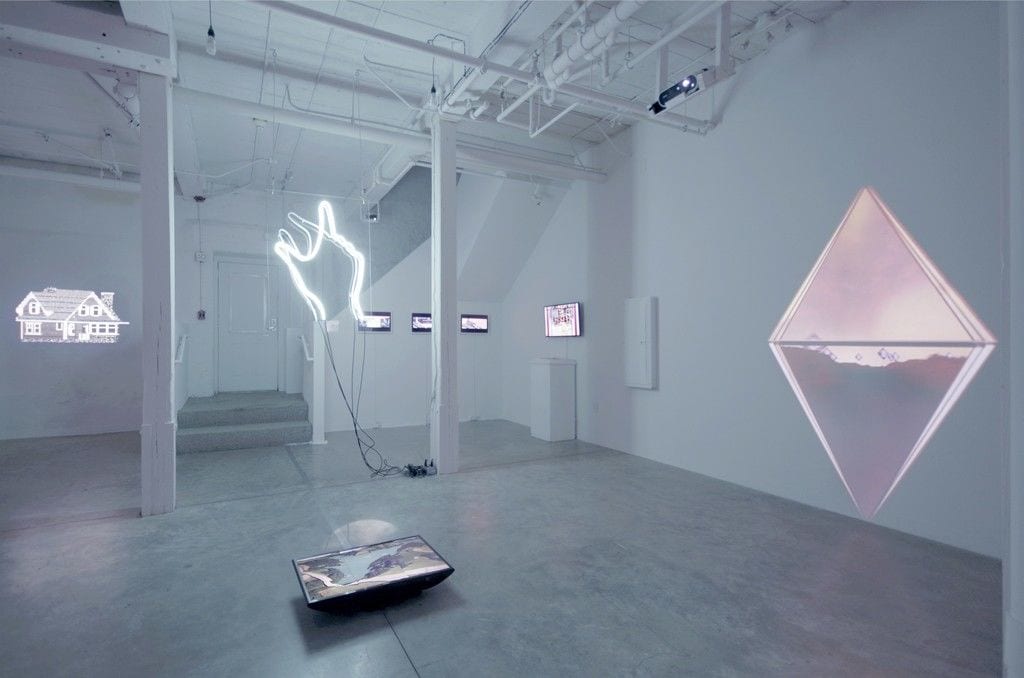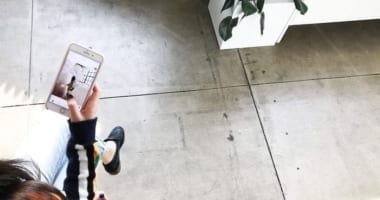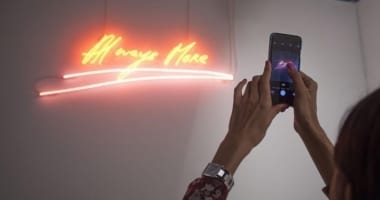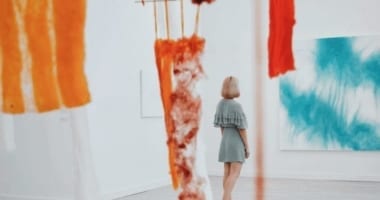How do you create a powerful first impression for your gallery’s online presence? There’s no question that a strong roster of artists, great branding, and strategic use of social media all play integral roles in bringing attention to your gallery. But perhaps the most important aspect of creating an impactful online presence is focusing on quality photography.
Whether it’s well-lit artwork images or beautiful installation shots (preferably both), a gallery’s photography singularly defines its program and transports collectors from the digital space to the physical space. At Artsy, where “quality worthy of art” is our maxim, we think a gallery’s photography should reflect the quality and strength of the artwork in their program.
Giving your gallery’s photography some attention will give you increased visibility in the online art market. With this in mind, we wanted to share some easy ways to help your gallery achieve exceptional photography time and time again.
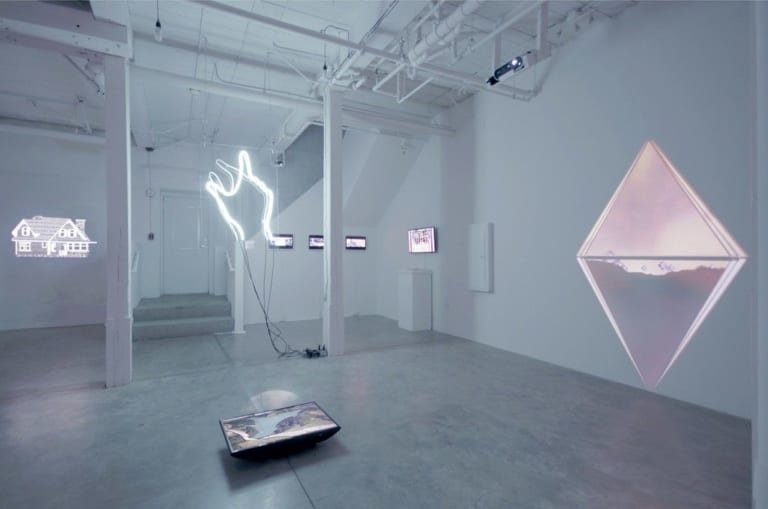
“Geographically Indeterminate Fantasies: The Animated GIF as Place (IRL)” at GRIN
Consistency is paramount.
Just like your logo, your photographs define your brand. Develop a consistent visual language that immediately becomes your calling card.
As Lindsey Stapleton from Providence, Rhode Island-based GRIN Gallery says, “Our online presence is an important place to put our best foot forward, and having great images is a big part of that.”
Pro tip: Keep wall colors relatively neutral or monochromatic and select a matching background for artwork imagery (this is especially important for three-dimensional objects, like furniture or sculpture).
Installation images add character and vitality to your online presence.
Gallery shows with three or more installation images on Artsy see a 30% higher engagement time compared with show pages without installation shots. For online collectors, it’s helpful to see the art in context, whether the works are paintings on a wall or pieces of furniture on the floor. Bottom line: This click-candy ultimately leads to more inquiries.
Pro-tip: Use a quality camera with a wide-angle lens and take multiple images in both portrait and landscape orientations.
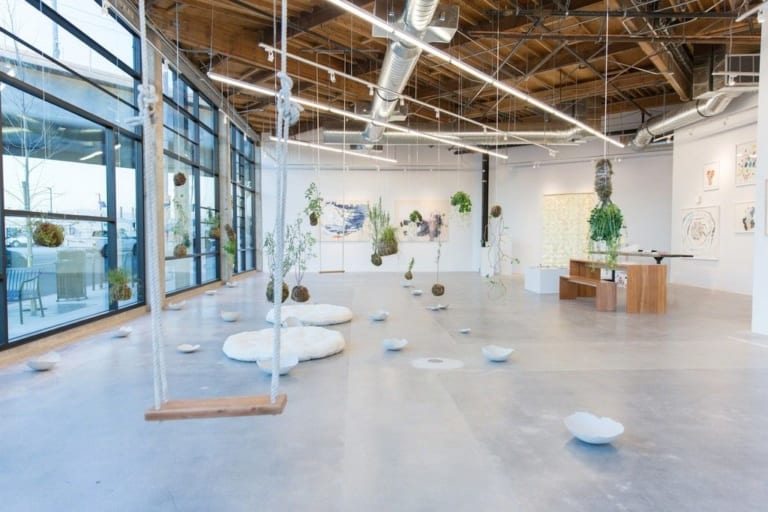
“Spatially Speaking” at Tappan
Natural Light is your friend.
California-based gallery Tappan uses its light-soaked space to its advantage, allowing sunlight and shadows to interact directly with the artwork. “Utilizing the unique nature of our space, which is adorned with more windows than most galleries have, we have embraced the influx of light, as it casts a truly beautiful and additive natural light and shadow across the exhibition space,” says the gallery’s artist manager Julia Young. “Allowing a natural glow into the room has helped us set a unique tone for our gallery.”
Naturally lit photographs more closely mirror the experience of seeing the work in person and more closely approximate the conditions of a collector’s home. “Natural light is always preferred to canned light,” says Owen Dodd, Artsy designer and our resident photographer. “If the gallery has low light, invest in a tripod. It will keep images from blurring.”
Pro-tip: Natural means natural. Keep the image set-up simple, clean, and well-lit to save on costly post-production editing. This will reduce the efforts of photoshopping your image—and a savvy set-up will take this step out of the equation all together.
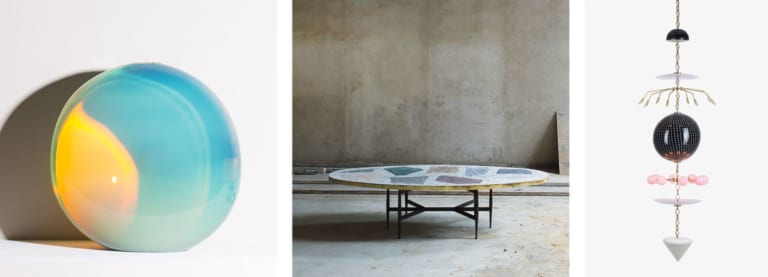
Left to right: John Hogan, “Mire,” 2016. ROOMS, “Magic Stone Oval Coffee Table,” 2016, Lindsey Adelman, “Totem I,” 2014. All courtesy of The Future Perfect.
High resolution + additional images = online success.
In the not-so-distant past, online images were small and grainy, but no longer. Faster internet speeds and website-rendering technologies enable a much richer viewing experience. Artsy recommends uploading artwork images of over 1,000 pixels on the shortest side (height or width); the higher the resolution, the better. Images of at least 2,000 pixels on the shortest side let collectors zoom in and experience the work more fully.
Adding additional images, with both full artwork shots and detail shots, is doubly helpful, as they elicit higher engagement with the artwork. “Being able to provide as close to an in-person viewing experience via photos as possible has proven imperative to the success of our program,” says Stapleton.
Pro-tip: Artsy accepts images as large as 30 MB, and with screens constantly evolving in resolution, uploading higher-quality images will be an investment into your future online presence.
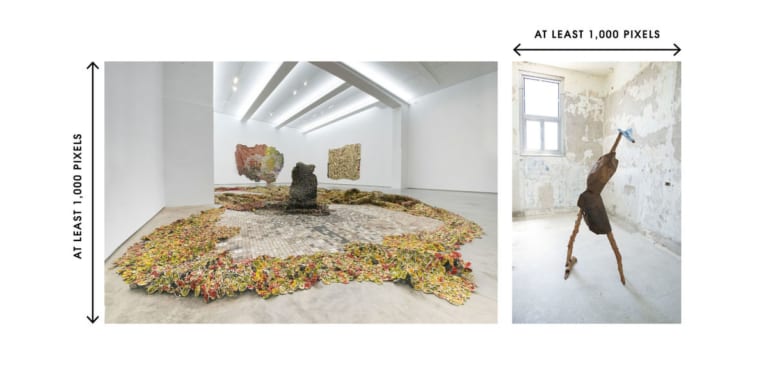
“Five Decades” at Jack Shainman Gallery, Kinderhook
Post early and often.
Jeff Sanford from Miami-based Gallery Diet hires a professional photographer to get the job done quickly to coincide with the show opening. “We try to take photos as soon as the show is up, but this tends to be either the night before the opening or two nights before the opening at most; our photographer gets them back to us the morning after the shoot,” he says. “We put them up on Artsy the day of the opening so that they can go live that evening.”
Pro-tip: The sooner the images are up, the sooner the images can be used to promote your gallery on social media, on your website, and on Artsy. Post them early to get ahead of the game.
Get social.
Artsy’s director of social, advises galleries to factor social media into their gallery photography. “Take one or two installation shots that are portrait in dimension to take full advantage of the possible real estate in your followers’ feeds,” he says.
They also advise galleries to take a few shots with people foregrounding the work. “Having a person in the frame helps your followers to understand scale and space.”
His suggestion is backed up by solid numbers too. Images with people perform better on social media, according to one study. On average, those images see a 12% higher click through rate than those without.
Pro-tip: Put people in a few of your shots to experiment, as long as they don’t obscure the work and they aren’t posing as if in a party photo. And remember to think of social media as one part of your overall photography strategy every time you plan installation and artwork photography.
Put your gallery program within reach of a global collector base.
“Because GRIN is not in a place where we have frequent walk-in traffic, we realized early on that having ample documentation available is hugely important to the success of any gallery, but especially for one that isn’t located in an an ‘art-world’ city,” says Stapleton.
Whether you have a photo and archive department or are doing it yourself, focusing on high-quality photography leads to measurable success in the online art marketplace, connecting a global collector-base across time zones and continents.
